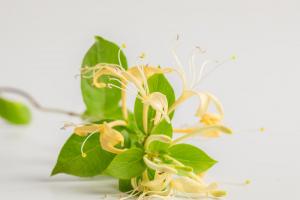Can You Plant Apple Trees in Texas?
Planting apple trees in Texas can be a challenge due to the state's unique climate and soil conditions. However, it is possible to grow apples in certain areas of Texas if you choose the right apple varieties and take the necessary precautions. In this article, we will discuss the factors to consider when planting apple trees in Texas and provide some tips on how to ensure a successful harvest.
Choosing the Right Apple Variety
The first step in planting apple trees in Texas is to choose the right variety. Not all apple varieties can thrive in the state's warm climate and heavy clay soils. Some apple varieties, such as Red Delicious and Gala, are more suited to cooler climates with abundant rainfall, while others, like Granny Smith and Rome, can tolerate warmer temperatures and drier conditions.
When choosing an apple variety to plant in Texas, it's important to consider the chill hours required for that particular variety. Chill hours are the number of hours that a tree needs to be exposed to temperatures between 32 and 45 degrees Fahrenheit in order to produce fruit. Texas has a wide range of climatic zones, and the number of chill hours required can vary greatly depending on where you live in the state. For example, central Texas may experience 500-800 chill hours per year, while north Texas may experience 800-1,200 chill hours per year.
Preparation and Planting
Once you have selected the right variety of apple tree for your area, you should prepare the soil for planting. Texas soil is generally heavy clay or sandy, which may require amending to allow for better drainage and nutrient uptake. Adding compost or well-rotted manure to the soil prior to planting can help improve soil structure and fertility. You should also make sure that the soil has a pH level between 6.0 and 7.0, as apples prefer a slightly acidic soil.
When planting apple trees in Texas, make sure to choose a location that receives full sun and has good air circulation. Apples require at least six hours of direct sunlight each day to produce fruit. Plant the tree in a hole that is twice as wide as the root ball, and make sure that the graft union (where the rootstock and scion are joined) is planted above the soil line. Water the tree thoroughly after planting and add a layer of mulch around the base of the tree to help retain moisture and regulate soil temperature.
Care and Maintenance
After planting your apple tree, it's important to provide it with proper care and maintenance to ensure a healthy and productive tree. Texas is known for its harsh summers, which can be hard on young apple trees. Make sure to water the tree regularly during the growing season, especially during periods of drought. You should also fertilize the tree annually with a balanced fertilizer to provide the nutrients it needs to grow and produce fruit.
Apple trees in Texas are also susceptible to pests and diseases, so it's important to monitor the tree regularly for signs of damage or infestation. Common pests in Texas include aphids, mites, and scale insects, while diseases like fire blight and cedar apple rust can also affect apples in the state. You may need to use organic or chemical controls to manage pests and diseases, but be sure to follow label instructions carefully to avoid damaging the tree or the environment.
Harvesting Apples
Finally, after several years of growth and care, your apple tree should be ready to produce fruit. In Texas, apple harvest generally occurs between late summer and early fall, depending on the variety and the number of chill hours required. When harvesting apples, make sure to pick only the ripe fruit, as unripe apples will not ripen after being picked. Apples should be stored in a cool, dry place to prevent them from spoiling or becoming mealy.
Overall, planting and growing apple trees in Texas can be a challenge but with careful planning and proper care, it can also be a rewarding experience. Make sure to choose the right apple variety for your area, prepare the soil for planting, and provide proper care and maintenance throughout the growing season. And finally, enjoy the fruits of your labor with fresh, crisp Texas-grown apples!

 how many times do yo...
how many times do yo... how many planted tre...
how many planted tre... how many pine trees ...
how many pine trees ... how many pecan trees...
how many pecan trees... how many plants comp...
how many plants comp... how many plants can ...
how many plants can ... how many plants and ...
how many plants and ... how many pepper plan...
how many pepper plan...

































